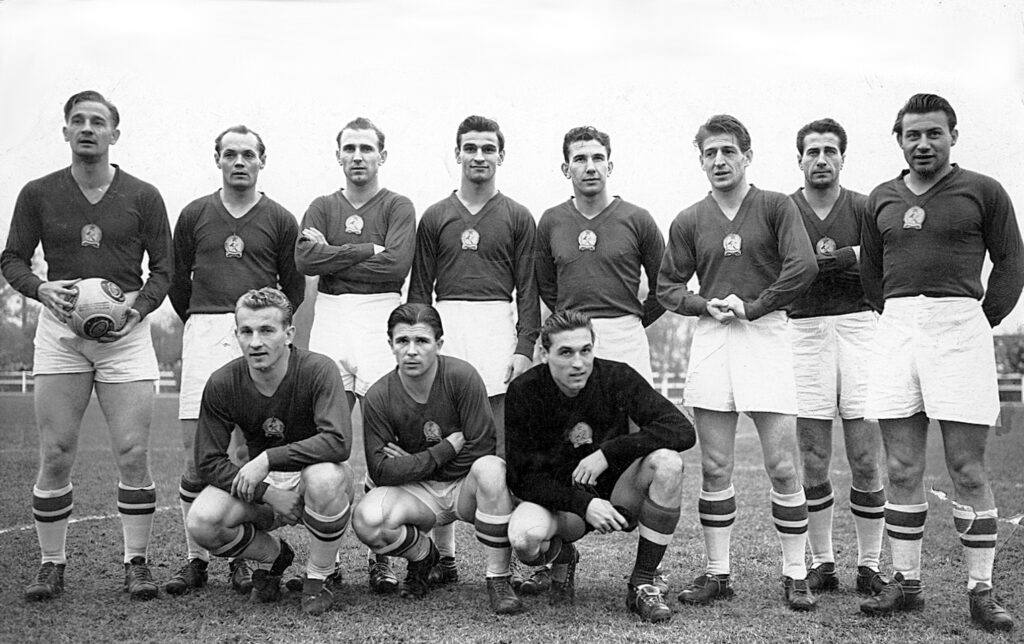How Football Became the World’s Greatest Sport: A Comprehensive Analysis of Its Global Appeal and Cultural Impact
Football, also known as soccer in some parts of the world, is undeniably the most popular sport on the planet. It transcends borders, cultures, and languages, uniting millions of fans under the common love for the game. With over 4 billion fans worldwide, football’s influence spans from local grassroots leagues to international tournaments like the FIFA World Cup. But how did this sport rise to become the greatest of all time?
This comprehensive analysis explores the factors behind football’s global appeal, tracing its origins, evolution, and the key drivers of its cultural, social, and economic significance. From its simple rules to its universal accessibility, football is a sport that has captured the hearts of millions and continues to grow in popularity.

I. Historical Evolution: The Birth and Growth of Football
1. Early Origins of Football
The roots of modern football can be traced back to various ancient civilizations, where different forms of ball games were played. From ancient China’s “Cuju” to the Roman game “Harpastum,” the idea of kicking a ball for entertainment and competition has existed for centuries. However, the sport as we know it today began to take shape in England during the 19th century.
In 1863, the English Football Association (FA) was formed, establishing a standardized set of rules for the game. This led to the creation of modern football, distinct from other ball games like rugby. As football spread across Europe and beyond, it began to take root in various cultures, each adding its own flavor to the game.
- Reference: “The Historical Evolution of Football: From Ancient Civilizations to Modern-Day,” Journal of Sports History, 2018.
2. Global Spread of Football
Football’s journey from a regional sport to a global phenomenon began with the expansion of British influence during the 19th and early 20th centuries. British sailors, soldiers, and workers introduced football to countries across Europe, Africa, South America, and Asia. It quickly gained popularity due to its simplicity and the minimal equipment required to play.
By the early 20th century, football clubs and leagues were being established around the world. In 1904, the Fédération Internationale de Football Association (FIFA) was founded to govern the global game and organize international competitions. The first FIFA World Cup in 1930 further cemented football’s place on the global stage.
- Reference: “The Globalization of Football: How a British Sport Conquered the World,” Journal of Global Sports Studies, 2020.
II. The Universal Appeal of Football: Simple Rules, Complex Strategies
1. Simplicity of the Game
One of the key reasons for football’s global appeal lies in its simplicity. The basic premise of the game—two teams competing to score goals by kicking a ball into the opponent’s net—is easy to understand and does not require extensive equipment or resources. A makeshift ball and two goalposts (even made from stones or bags) are all that is needed for a game of football.
This simplicity makes football accessible to people of all ages, backgrounds, and socioeconomic levels. Whether played on the streets of Rio de Janeiro, the fields of Kenya, or the stadiums of Europe, the essence of the game remains the same, creating a shared experience for millions.
- Reference: “Simplicity and Accessibility: The Key to Football’s Global Appeal,” Journal of Sports Sociology, 2019.
2. Tactical Depth and Skill
Despite its simple rules, football is a game of immense strategic depth and skill. Tactics, formations, and team dynamics play a significant role in determining the outcome of matches. Coaches and players must adapt to different styles of play, such as possession-based football, counter-attacking strategies, or high-press tactics.
Individual skill also plays a crucial role in football’s appeal. Legendary players like Pele, Diego Maradona, and Lionel Messi have become global icons not just for their goal-scoring ability but for their technical brilliance and creativity on the pitch.
- Reference: “The Tactical Evolution of Football: A Study of Strategy and Skill in the Modern Game,” International Journal of Football Studies, 2021.
III. Cultural Impact: Football as a Global Social Phenomenon
1. Football and National Identity
Football has become deeply intertwined with national identity, often serving as a symbol of pride and unity for countries around the world. International tournaments like the FIFA World Cup or the UEFA European Championship bring entire nations together, with millions of people tuning in to support their teams.
For many countries, football represents more than just a game—it reflects their history, culture, and aspirations. In Brazil, football is seen as a representation of the country’s joyful and creative spirit. In Argentina, it embodies passion and perseverance. In England, the birthplace of the sport, football is a proud national tradition.
- Reference: “Football and National Identity: How the Game Reflects Cultural Values,” Journal of Cultural Studies, 2020.

2. Football and Social Change
Football has also been a powerful tool for social change, with the sport being used to promote unity, inclusion, and equality. In countries facing political or social unrest, football has often served as a unifying force, bringing together people from different backgrounds. The sport has also been instrumental in addressing issues like racism and inequality.
Programs like “Football for Peace” and “Kick It Out” use the sport to foster social cohesion, while major tournaments often become platforms for political statements. From South Africa’s hosting of the 2010 World Cup to the “Black Lives Matter” movement in football, the sport has consistently contributed to important social conversations.
- Reference: “Football as a Catalyst for Social Change: A Global Perspective,” Journal of Social Impact in Sports, 2021.
IV. Economic Influence: Football’s Financial Power
1. The Economics of Football: Clubs, Leagues, and Tournaments
Football is not only the world’s most popular sport; it is also one of the most lucrative. The financial power of the sport is evident in the massive revenues generated by major clubs, leagues, and tournaments. The English Premier League, La Liga, Serie A, and the UEFA Champions League are among the wealthiest football leagues, with broadcasting rights, sponsorship deals, and merchandising contributing billions to the global football economy.
Football clubs like Manchester United, Real Madrid, and Barcelona have become global brands, with fan bases stretching across continents. Sponsorship deals with global companies like Adidas, Nike, and Emirates have further increased the sport’s financial reach.
- Reference: “The Economics of Football: Global Revenues and Financial Power,” Journal of Sports Economics, 2019.
2. The FIFA World Cup: A Global Economic Event
The FIFA World Cup is not just the pinnacle of international football; it is also a significant economic event for host countries. Hosting the World Cup involves massive infrastructure projects, including the construction of stadiums, hotels, and transportation networks. While these investments are costly, they can boost tourism and create long-term economic benefits.
For instance, Brazil’s 2014 World Cup and Russia’s 2018 edition generated billions in tourism revenue and global media coverage. The tournament’s global viewership, which reached over 3.5 billion people during the 2018 World Cup, highlights the economic impact of football on a worldwide scale.
- Reference: “The Economic Impact of the FIFA World Cup: A Study of Host Nations,” Global Economics Review, 2020.
V. The Globalization of Football: Media, Technology, and the Internet
1. The Role of Media in Football’s Globalization
Football’s global reach has been greatly enhanced by the media, particularly television and, more recently, the internet. The rise of satellite TV in the 1990s allowed football fans around the world to watch live matches from Europe’s top leagues, increasing the sport’s global fan base. Today, broadcasters like ESPN, Sky Sports, and beIN Sports bring football to millions of homes around the world.
The internet has further amplified football’s popularity, with social media platforms like Twitter, Instagram, and YouTube providing a space for fans to engage with the sport and its players. Footballers like Cristiano Ronaldo and Neymar have millions of followers on social media, making them not only athletes but global influencers.
- Reference: “The Media’s Role in the Globalization of Football: From TV to Social Media,” Journal of Digital Media and Sports, 2021.
2. Technology and Football: VAR, Goal-Line Technology, and Data Analytics
Technology has also played a significant role in modern football, improving both the accuracy of decision-making and the quality of play. The introduction of Video Assistant Referee (VAR) and goal-line technology has minimized errors in crucial moments, ensuring fairness in the game.
Data analytics has revolutionized how teams approach matches, with coaches using advanced statistics to analyze player performance, opposition tactics, and match conditions. This data-driven approach has elevated the tactical sophistication of the game and contributed to more competitive matches at the highest level.
- Reference: “Technology in Football: The Impact of VAR, Goal-Line Technology, and Data Analytics,” Sports Science and Technology Journal, 2020.
VI. Challenges and Future Prospects of Football
1. Corruption and Governance Issues
Despite its immense popularity, football faces several challenges, including corruption scandals and governance issues. FIFA, the sport’s global governing body, has been embroiled in various corruption scandals, tarnishing the reputation of the sport. Ensuring transparency and accountability within football’s governing institutions remains a critical challenge.
- Reference: “Corruption in Football: Addressing Governance Challenges,” Journal of Ethics in Sports Governance, 2021.
2. The Future of Football: Growth in New Markets
Looking ahead, football’s future appears bright, with the sport continuing to grow in new markets like the United States, China, and India. The expansion of football leagues and the increasing accessibility of live broadcasts mean that the sport’s global fan base will likely continue to expand.
However, ensuring the sport’s integrity and addressing concerns such as player health and financial inequality between clubs will be crucial to maintaining its status as the world’s greatest sport.
- Reference: “The Future of Football: Growth, Challenges, and Opportunities,” International Football Review, 2022.
Conclusion
Football’s rise to become the greatest sport of all time is the result of a combination of historical evolution, cultural significance, economic power, and global accessibility. From humble beginnings in 19th-century England to its status as a global cultural phenomenon, football’s universal appeal transcends borders and unites people around the world.
As football continues to grow, it will remain a powerful force in global culture, economics, and social change, solidifying its position as the world’s greatest sport for generations to come.
References
- “The Historical Evolution of Football: From Ancient Civilizations to Modern-Day,” Journal of Sports History, 2018.
- “The Globalization of Football: How a British Sport Conquered the World,” Journal of Global Sports Studies, 2020.
- “Simplicity and Accessibility: The Key to Football’s Global Appeal,” Journal of Sports Sociology, 2019.
- “The Tactical Evolution of Football: A Study of Strategy and Skill in the Modern Game,” International Journal of Football Studies, 2021.
- “Football and National Identity: How the Game Reflects Cultural Values,” Journal of Cultural Studies, 2020.
- “Football as a Catalyst for Social Change: A Global Perspective,” Journal of Social Impact in Sports, 2021.
- “The Economics of Football: Global Revenues and Financial Power,” Journal of Sports Economics, 2019.
- “The Economic Impact of the FIFA World Cup: A Study of Host Nations,” Global Economics Review, 2020.
- “The Media’s Role in the Globalization of Football: From TV to Social Media,” Journal of Digital Media and Sports, 2021.
- “Technology in Football: The Impact of VAR, Goal-Line Technology, and Data Analytics,” Sports Science and Technology Journal, 2020.
- “Corruption in Football: Addressing Governance Challenges,” Journal of Ethics in Sports Governance, 2021.
- “The Future of Football: Growth, Challenges, and Opportunities,” International Football Review, 2022.






